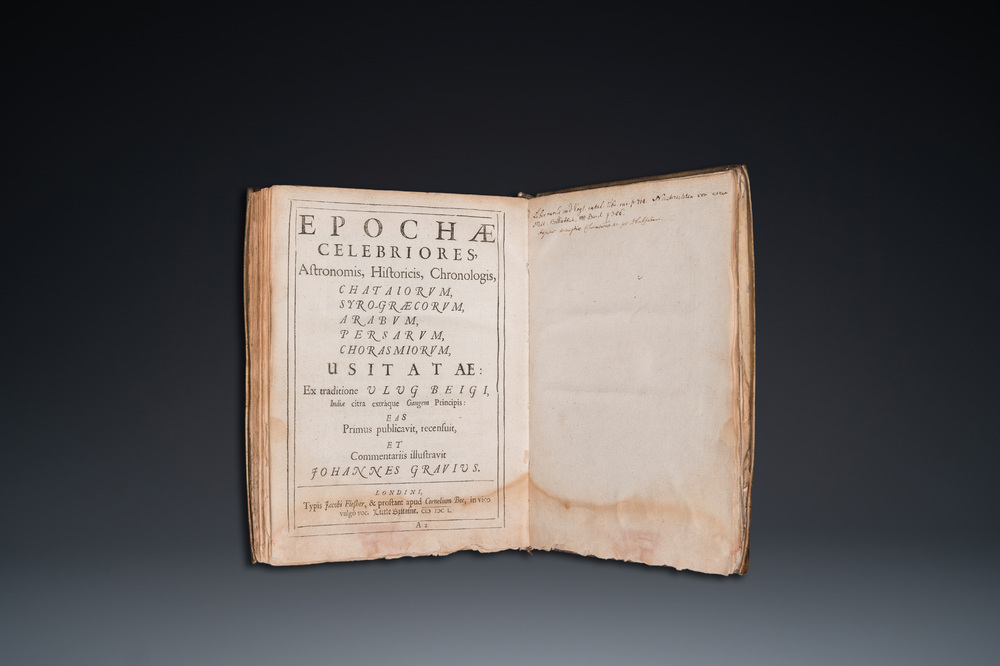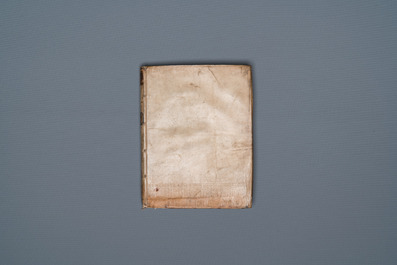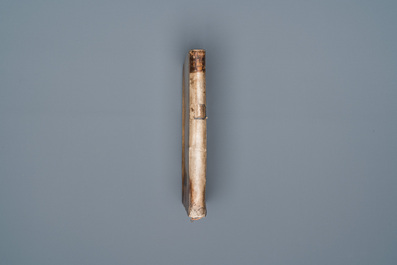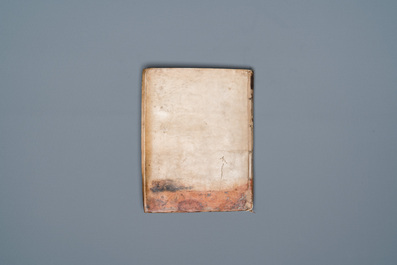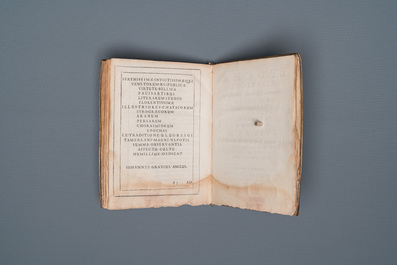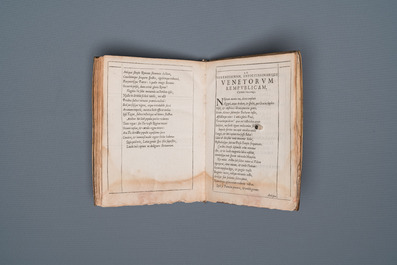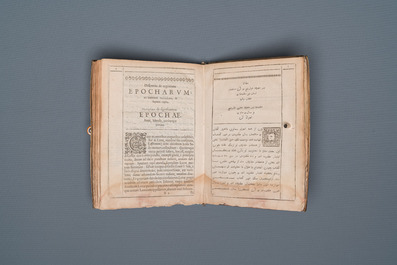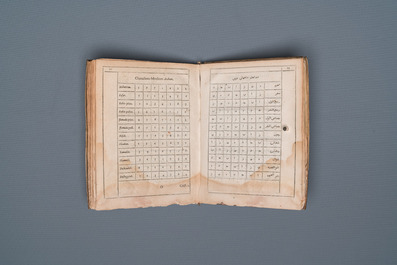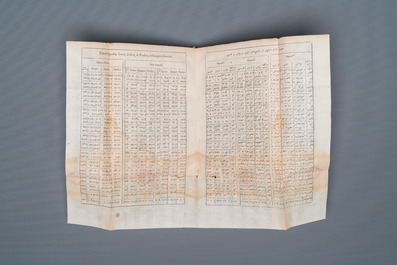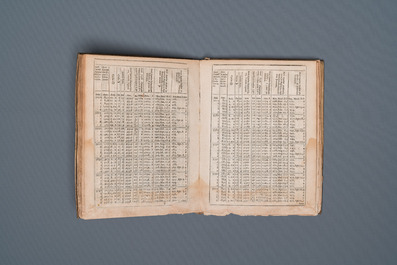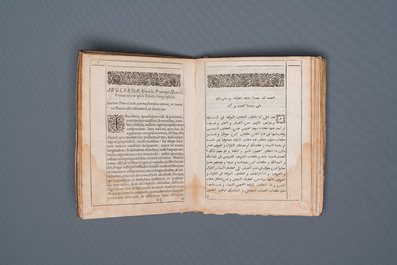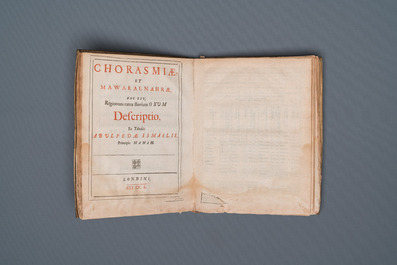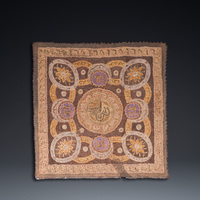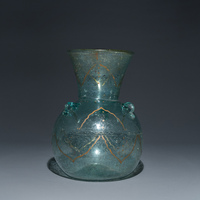Nous devons vérifier que votre inscription n'est pas une entrée automatique. Veuillez s'il vous plaît compléter le test suivant:
Ulugh Beg (1394-1449) & John Greaves (1602-1652): Epochae celebriores (...), Londres, 1650
Dim.: 22,5 x 18 cm (closed)
Bound with: ABULFEDA. Chorasmiæ et Mawaralnahræ, hoc est, regionum extra fluvium Oxum descriptio, ex tabulis Abulfedæ Ismaelis, Principis Hamah. (Ed. J. Gravius). London, 1650.
Collected and edited by John Greaves (1602-1652), Savilian Professor of Astronomy at Oxford, this work is a description of the various national calendars in use by astronomers of the Middle Ages.
Muhammed Taragai Ulugh Beg (1394-1449) was a Turk who ruled the province of Transoxiana (Maverannahr), a region situated between the river Oxus (Amu Darya) and the river Jaxartes (Syr Darya), the principal city of which was Samarkand. Ulugh Beg's grandfather was the famous conqueror Timur (1336-1405). Ulugh Beg became the ruler of Transoxiana in 1447 upon the death of his father. But his rule was of short duration. Two years later he was killed by an assassin hired by his son 'Abd al Latif.Were it only for his role as prince, viceroy, and martyr, few scholars would know of Ulugh Beg. But his memory lives on because he was an observatory builder, patron of astronomy, and astronomer in his own right. He was certainly the most important observational astronomer of the 15th century. He was one of the first to advocate and build permanently mounted astronomical instruments. His catalogue of 1018 stars (some sources count 1022) was the only such undertaking carried out between the times of Claudius Ptolemy (ca. 170 A.D.) and Tycho Brahe (ca. 1600). And, as we shall briefly discuss here, his attitude towards scientific endeavors was surprisingly modern. The administration of Transoxiana was the responsibility of Ulugh Beg's father for most of Ulugh Beg's life. The prince had the opportunity (and the inclination) to pursue scholarly matters. His interest in astronomy dates from an early age, when he visited the remains of the Maragha Observatory, made famous by the astronomer Nasir al-Din al-Tusi (1201-74). The principal accomplishment at Maragha was the Zij-i ilkhani, or Ilkhanic Tables.
